Free Fire and Fortnite are two popular battle royale games. Both offer unique experiences, yet they appeal to different players.
Understanding the differences between Free Fire and Fortnite can help gamers choose their preferred game. Each title has its own style, mechanics, and visual elements. Free Fire focuses on fast-paced gameplay with simplified tactics. In contrast, Fortnite emphasizes creative building and cartoonish graphics.
This comparison explores key aspects like graphics, gameplay mechanics, and community features. Whether you enjoy competitive play or casual fun, knowing what sets these games apart can enhance your gaming experience. Join us as we dive deeper into the world of Free Fire and Fortnite, highlighting what makes each game special.

Credit: m.youtube.com
Realistic Vs. Cartoonish Graphics
Free Fire features realistic graphics that focus on tactical gameplay, while Fortnite embraces cartoonish visuals with vibrant colors. This difference shapes player experiences, attracting various audiences. Both games offer unique styles, enhancing their appeal in the battle royale genre.
The graphics in games like Free Fire and Fortnite play a big role in how players experience them. Each game takes a unique approach to its visual style, which can affect player engagement and enjoyment. Let’s dive into the differences between realistic and cartoonish graphics.
Realistic Graphics In Free Fire
Free Fire opts for a more realistic art style. This choice impacts how players connect with the game world.
- Detailed environments: The maps feature lifelike terrains and buildings, enhancing immersion.
- Character design: Characters look more like real people, adding depth to the gameplay.
- Weapon realism: Guns and equipment resemble real-world counterparts, making the experience relatable.
Cartoonish Graphics In Fortnite
Fortnite embraces a vibrant, cartoonish style. This approach attracts a wide audience, especially younger players.
- Bright colors: The use of bold colors creates a lively atmosphere that feels inviting.
- Stylized characters: Characters have exaggerated features, making them memorable and fun.
- Creative environments: The maps are whimsical and imaginative, sparking creativity and exploration.
Both games offer distinct visual experiences. Players often choose based on personal preference for either realistic or cartoonish styles.
Read Also:
- Free Fire Top Up Centre 100 Bonus: Maximize Your Game
- Redeem Code Free Fire in India: Don’t miss out on getting for free!
- Free Fire King Name Dominating the Battle Royale Arena
- 40+ Slogan for Free Fire Guild: How to Create the Perfect Catchphrase for Your Squad
Animation And Special Effects
Free Fire and Fortnite both feature unique animations and special effects. Free Fire focuses on fast-paced action and vibrant graphics, while Fortnite offers a colorful, cartoonish style with fun emotes. Each game creates a distinct atmosphere, appealing to different player preferences.
In the world of battle royale games, animation and special effects play a crucial role. Both Free Fire and Fortnite offer unique styles that enhance the gaming experience. Let’s explore how they differ in this aspect.
Animation Style
The animation style in Free Fire and Fortnite sets them apart significantly. Each game has its own artistic approach that contributes to player engagement.
- Free Fire’s animations: They are more realistic and grounded. The characters move fluidly, making gameplay feel natural.
- Fortnite’s animations: They lean toward a cartoonish vibe. Characters perform exaggerated movements, adding a fun element to the game.
Special Effects
Special effects in these games elevate the overall aesthetic and gameplay dynamics. The distinct choices in effects can influence player immersion.
- Free Fire’s special effects: They focus on practicality. Explosions and gunfire effects are designed to enhance realism.
- Fortnite’s special effects: They embrace creativity. Colorful explosions and whimsical visuals create a vibrant atmosphere.
Character Customization
Character customization in both games also showcases differences in animation and effects. Players can express their style in various ways.
- Free Fire’s customization options: They offer realistic skins and accessories. Players can create a unique character that feels authentic.
- Fortnite’s customization options: These are more playful and imaginative. Players can choose from a range of wild outfits and emotes, enhancing visual appeal.
Fortnite’s Unique Building System
Fortnite’s building system sets it apart from Free Fire. Players can quickly create structures for defense or high ground. This unique feature adds strategy and depth, making each match different.
Fortnite stands out for its creative building system, which sets it apart from other battle royale games. This feature allows players to construct structures in real time during gameplay. The ability to build adds a layer of strategy that changes how players approach combat and survival.
Building Basics
In Fortnite, players can gather materials to build structures. This adds a unique twist to the gameplay. Here are some key points about building:
- Materials: Players collect wood, stone, and metal: Each material has different strengths and weaknesses.
- Structures: You can build walls, ramps, and floors: These structures can block enemy fire or provide height advantage.
- Quick Builds: Players can build fast during fights: Speed is crucial for gaining the upper hand.
Strategy And Tactics
The building system influences how players strategize in Fortnite. Players must think on their feet. Here’s how building affects gameplay:
- Defensive Play: Building walls can protect against attacks: This allows time to heal or regroup.
- High Ground: Gaining elevation is key: Higher positions offer better sightlines and shooting angles.
- Creative Combat: Players can use builds for tricks: Unexpected structures can confuse opponents and create openings.
Learning Curve
Mastering the building mechanics takes practice. New players might find it challenging. Here’s what to consider:
- Practice Mode: Fortnite offers a creative mode: This allows players to practice building without pressure.
- Building Sensitivity: Adjusting controls can help: Finding the right sensitivity makes building easier.
- Watching Others: Many players learn by observing: Tutorials and streams show effective building techniques.
Fortnite’s building system adds depth to the game. It encourages creativity and quick thinking. Players who adapt quickly can gain a significant advantage in the ever-changing battlefield.
Free Fire’s Simplified Battle Tactics
Free Fire offers simpler battle tactics compared to Fortnite. Players can quickly pick up weapons and engage in fast-paced action. This makes Free Fire easier for beginners, while Fortnite provides more complex strategies and building mechanics. Each game has its own unique style and player experience.
Free Fire offers a unique gaming experience with its simplified battle tactics. Players can quickly grasp the mechanics and dive into the action. This makes it a favorite among casual gamers.
Fast-paced Gameplay
The game emphasizes quick matches. Players can jump right into the action without a steep learning curve.
- Shorter Match Durations: Games usually last around 10 minutes. This allows players to enjoy multiple rounds in a short time.
- Simple Controls: The controls are easy to learn. New players can pick them up quickly, making the game accessible.
Smaller Map Size
Free Fire features a more compact map. This design fosters immediate encounters and quick decisions.
- Increased Player Density: With fewer players in a smaller area, players encounter opponents more often. This leads to faster-paced gameplay.
- Quick Looting Opportunities: Players can quickly gather weapons and supplies. This keeps the action moving and maintains excitement.
Limited Weapon Choices
The game offers a streamlined selection of weapons. This helps players focus on the essentials.
- Fewer Weapons to Master: Fewer choices mean less time spent learning. Players can quickly find their favorites and improve their skills.
- Balanced Gameplay: A limited selection promotes fairness. Players can compete without worrying about overpowering weapons.
Simplified Strategies
Free Fire encourages straightforward tactics. Players can quickly devise plans to outsmart opponents.
- Easy Team Coordination: Teams can quickly communicate strategies. Simple tactics allow for effective teamwork.
- Focus on Survival: The main goal is to stay alive. Players can concentrate on what matters most during matches.
Skins, Weapons, And In-game Currencies
Skins, weapons, and in-game currencies play different roles in Free Fire and Fortnite. Free Fire focuses on quick matches with unique skins and simpler currency options. Fortnite offers a wider variety of weapon types and more complex in-game currencies, enhancing player customization and strategy.
Both Free Fire and Fortnite have unique features that attract players. One major area of difference is in their skins, weapons, and in-game currencies. These elements enhance gameplay and personalization.
Skins And Customization
Skins play a vital role in both games. They allow players to express themselves.
- Variety of Skins in Fortnite: Fortnite offers a wide range of skins. Players can choose from various themes, such as superheroes or fantasy characters: this keeps the game fresh and exciting.
- Limited Skins in Free Fire: Free Fire also provides skins, but they are often fewer in number: players may find some skins exclusive to events or seasons.
Weapons And Combat Style
Weapons differ significantly between the two games. Each game has its own combat style that affects gameplay.
- Fortnite’s Building Mechanic: Fortnite allows players to build structures during combat: this adds a strategic layer to battles.
- Free Fire’s Focus on Gunplay: Free Fire emphasizes gunplay over building: players rely on skills and weapon choices for victory.
In-game Currencies
In-game currencies are crucial for purchasing items and enhancing the gaming experience.
- V-Bucks in Fortnite: Players use V-Bucks to buy skins and emotes: this currency can be earned or purchased.
- Diamonds in Free Fire: Free Fire uses diamonds as its premium currency: these can be bought directly or earned through gameplay.
Understanding these differences can help players choose which game suits their style better. Each game offers a unique experience based on skins, weapons, and currencies.
Free Fire Vs. Fortnite Battle Pass System
Free Fire and Fortnite have different battle pass systems. Free Fire offers a straightforward approach with fewer tiers. Fortnite, on the other hand, features multiple tiers with unique rewards. Players can choose between these styles based on their preferences.
In the world of battle royale games, Free Fire and Fortnite stand out. Both have a loyal following and unique features. One major difference lies in their battle pass systems. Understanding these systems helps players make the best choice for their gaming experience.
Free Fire Battle Pass System
Free Fire offers a straightforward battle pass system. It provides players with rewards as they progress. Here’s what you need to know:
- Seasonal Passes: These change every few months. Each season brings new challenges and rewards. Players must complete tasks to earn points.
- Two Tiers: There are usually two tiers: free and premium. The free tier has basic rewards. The premium tier offers exclusive items.
- Cost-Effective: The price for the premium pass is affordable. Players can enjoy a wealth of content without spending too much.
- Daily Missions: Players can complete daily missions to earn extra points. This keeps the gameplay fresh and engaging.
Fortnite Battle Pass System
Fortnite’s battle pass system is quite popular. It features a wide range of rewards and challenges. Here’s how it works:
- Seasonal Structure: Each season lasts around 10 weeks. New themes and content keep players excited.
- One Tier: There is a single battle pass available for purchase. Players earn rewards as they level up through the pass.
- V-Bucks Currency: Players can buy the battle pass with V-Bucks. This currency is earned in-game or purchased with real money.
- Unique Challenges: Weekly challenges offer players a variety of tasks. Completing these helps level up faster and unlock rewards.
Understanding these systems can enhance your gaming experience. Players can choose the one that fits their style best.
Free Fire’s Optimization For Low-end Devices
Free Fire runs smoothly on low-end devices, making it accessible to more players. In contrast, Fortnite needs better hardware, which can limit its audience. This difference affects how many people can enjoy each game.
Free Fire stands out for its ability to run smoothly on low-end devices. Many players around the world enjoy gaming, even without the latest hardware. This optimization makes Free Fire accessible to a broader audience.
Lightweight Design For Accessibility
Free Fire is designed to work well on devices with less power. This makes it easier for more players to join in.
- Lower Graphics Requirements: The game uses simpler graphics. This allows it to run on older phones without lag.
- Smaller File Size: The game takes up less space. Players can download it even with limited storage.
- Efficient Performance: Free Fire runs smoothly, even with lower RAM. This ensures a good gaming experience.
Compatibility With Various Devices
Players can enjoy Free Fire on a wide range of devices. This flexibility attracts many users.
- Supports Older Operating Systems: The game works on older Android and iOS versions. Players don’t need to upgrade their devices.
- Adaptable Settings: Players can adjust graphics settings. This helps improve performance on different devices.
- Wider Device Range: Free Fire is compatible with many brands and models. This broadens its player base significantly.
Regular Updates For Performance Improvement
The game developers focus on regular updates. These updates help enhance performance on low-end devices.
- Bug Fixes: Regular updates fix issues that affect gameplay. This ensures a smoother experience for all players.
- Performance Enhancements: Developers optimize the game frequently. This keeps it running well on various devices.
- User Feedback: The team listens to player feedback. This helps them understand what improvements are needed.
Free Fire’s optimization for low-end devices truly makes it a favorite among players. Its design and updates ensure everyone can enjoy the game, regardless of their device’s specifications.
Fortnite’s High-end Graphics Requirements
Fortnite demands high-end graphics for an immersive experience, unlike Free Fire, which runs smoothly on lower-end devices. Players enjoy detailed visuals and vibrant environments in Fortnite, while Free Fire focuses on accessibility and quick gameplay. This difference shapes the gaming experience for both audiences.
Fortnite stands out with its vibrant graphics and detailed environments. Players enjoy a visually rich experience that enhances gameplay. However, these high-end graphics come with specific requirements, making it essential for players to consider their hardware.
Minimum System Requirements For Fortnite
Fortnite requires certain specifications to run smoothly. Here’s a quick look at the minimum requirements:
- Operating System: Windows 7/8/10 or macOS Sierra: You need a compatible system for installation.
- Processor: Intel Core i3-3225 or AMD Phenom II X4 973: A decent CPU is necessary for performance.
- Memory: 4 GB RAM: Sufficient RAM ensures the game runs without lag.
- Graphics Card: Intel HD 4000 or AMD Radeon 7870: A capable GPU is crucial for graphics quality.
- DirectX: Version 11: This is needed to support the game’s graphics.
Recommended System Requirements For Better Experience
For an optimal gaming experience, players should aim for higher specifications. Here are the recommended requirements:
- Operating System: Windows 10 64-bit or macOS Mojave: These systems support the latest updates.
- Processor: Intel Core i5-7300U or AMD Ryzen 3 3300U: A powerful CPU enhances performance.
- Memory: 8 GB RAM: More RAM allows for smoother gameplay and multitasking.
- Graphics Card: Nvidia GTX 960 or AMD Radeon R9 280: A stronger GPU improves visual fidelity.
- DirectX: Version 11 or higher: This ensures compatibility with advanced graphical features.
The Impact Of Graphics On Gameplay
High-end graphics in Fortnite play a significant role in gameplay. Here’s how they affect the experience:
- Visual Clarity: Detailed graphics help players spot enemies better: Clearer visuals lead to improved awareness.
- Immersion: Stunning environments draw players into the game world: Players feel more engaged with realistic settings.
- Frame Rate: Better graphics often require more processing power: Higher frame rates lead to smoother movements.
Conclusion On Graphics Requirements
Understanding Fortnite’s graphics requirements is key for players. Optimal hardware enhances the gaming experience significantly. Preparing your system can lead to better performance and enjoyment in the game.
Regional Popularity Differences
Regional popularity differences show how Free Fire and Fortnite attract different audiences. Free Fire is more popular in regions like Southeast Asia, while Fortnite thrives in North America and Europe. Each game offers unique features that appeal to players based on their location and gaming preferences.
The gaming world is vast, and two titles stand out: Free Fire and Fortnite. Each game has carved its niche, attracting players from different regions. Understanding their regional popularity helps explain their unique appeal.
Popularity In Asia
Free Fire has found a massive audience in Asia.
- User Base: Millions of players engage daily.
- Cultural Relevance: The game resonates with local gaming cultures.
- Access: Lower device requirements make it playable for more people.
Popularity In North America
Fortnite dominates the North American gaming scene.
- Community Events: Frequent tournaments and events attract fans.
- Streaming Influence: Popular streamers boost its visibility.
- Cross-Platform Play: Players can connect across devices easily.
Popularity In Europe
Both games have a presence, but preferences vary.
- Free Fire: Grows steadily in Eastern Europe.
- Fortnite: More popular in Western European countries.
- Cultural Factors: Local trends influence player choices.
Popularity In Latin America
Free Fire enjoys tremendous success in Latin America.
- Engagement: Active communities support the game.
- Social Features: Players enjoy the social aspects of the game.
- Localized Content: Tailored events resonate well with players.
Popularity In The Middle East
Fortnite has a strong following in the Middle East.
- High-Quality Graphics: Players appreciate the visual appeal.
- Competitive Scene: Esports tournaments attract attention.
- Community Engagement: Players often connect through social media.
These regional differences highlight how culture and preferences shape gaming communities. Each game offers unique experiences, catering to diverse audiences worldwide.
Esports And Tournament Scenes
Free Fire and Fortnite are popular battle royale games with key differences. Free Fire focuses on shorter matches and mobile play, appealing to casual gamers. Fortnite stands out with its building mechanics and vibrant graphics, attracting a diverse audience. Each game offers a unique esports experience.
The esports and tournament scenes have become vital parts of both Free Fire and Fortnite. Each game has its own unique style and format, attracting players and fans worldwide. Understanding these differences can highlight what makes each game stand out.
Tournament Structure
Both Free Fire and Fortnite offer exciting tournaments, but their structures differ.
- Free Fire tournaments: Organized by various companies and communities. They often feature short matches and quick elimination rounds.
- Fortnite tournaments: Typically include longer matches with more complex strategies. They are often hosted by Epic Games, featuring larger prize pools.
Community Engagement
Community involvement plays a key role in the success of esports.
- Free Fire community: Highly active, with many local events. Players often engage in smaller tournaments, fostering a close-knit atmosphere.
- Fortnite community: Vast and diverse, with global competitions. Events attract players from around the world, encouraging a larger audience.
Prize Pools And Sponsorships
Financial incentives in esports tournaments can be significant.
- Free Fire prize pools: Generally smaller but still attractive. Local tournaments often provide opportunities for rising stars.
- Fortnite prize pools: Notable for their size, often exceeding millions of dollars. Sponsored events draw in top players, raising the stakes.
Streaming And Viewership
Streaming platforms play a big role in the popularity of esports.
- Free Fire streams: Popular on regional platforms, reaching local audiences. Many players enjoy watching their friends or local stars compete.
- Fortnite streams: Frequently featured on platforms like Twitch and YouTube. Major tournaments attract millions of viewers globally, creating a vibrant online community.
Understanding these aspects enhances appreciation for both Free Fire and Fortnite in the esports scene. Each game continues to grow, offering unique experiences for players and fans alike.

Credit: www.fortnite.com
Frequently Asked Questions
What Are The Graphics Differences Between Free Fire And Fortnite?
Free Fire features more realistic graphics, while Fortnite showcases cartoonish visuals. This difference appeals to varied player preferences. Players looking for a vibrant, playful environment may prefer Fortnite. Conversely, those favoring a serious tone might enjoy Free Fire’s aesthetic.
How Does Fortnite’s Building System Work?
Fortnite’s building system allows players to create structures using gathered resources. Players can construct walls, ramps, and more for strategic advantages. This unique feature adds depth to gameplay and requires quick thinking. Mastering building mechanics is essential for competitive success in Fortnite.
Are Free Fire’s Battle Tactics More Simplified?
Yes, Free Fire offers simplified battle tactics compared to Fortnite. The game focuses on quick matches and straightforward gameplay mechanics. This makes Free Fire more accessible to casual gamers. Players can enjoy fast-paced action without complex strategies or building requirements.
What Are The Differences In Skins And Currencies?
Both games offer unique skins and in-game currencies. Fortnite features a diverse range of cosmetics and seasonal events. Free Fire has various character skins and weapon customizations. Players can purchase items using in-game currency or real money in both games.
Conclusion
Both Free Fire and Fortnite offer unique gaming experiences. Free Fire focuses on quick matches and simple tactics. Players enjoy its easy access on low-end devices. Fortnite stands out with its building mechanics and vibrant graphics. Each game attracts different players based on personal preference.
Some favor realism, while others enjoy a cartoonish style. Understanding these differences can help players choose their ideal game. Whether you prefer fast-paced action or strategic building, both games provide fun experiences. Explore both to find what suits you best.
Choose the game that matches your style and enjoy the adventure.
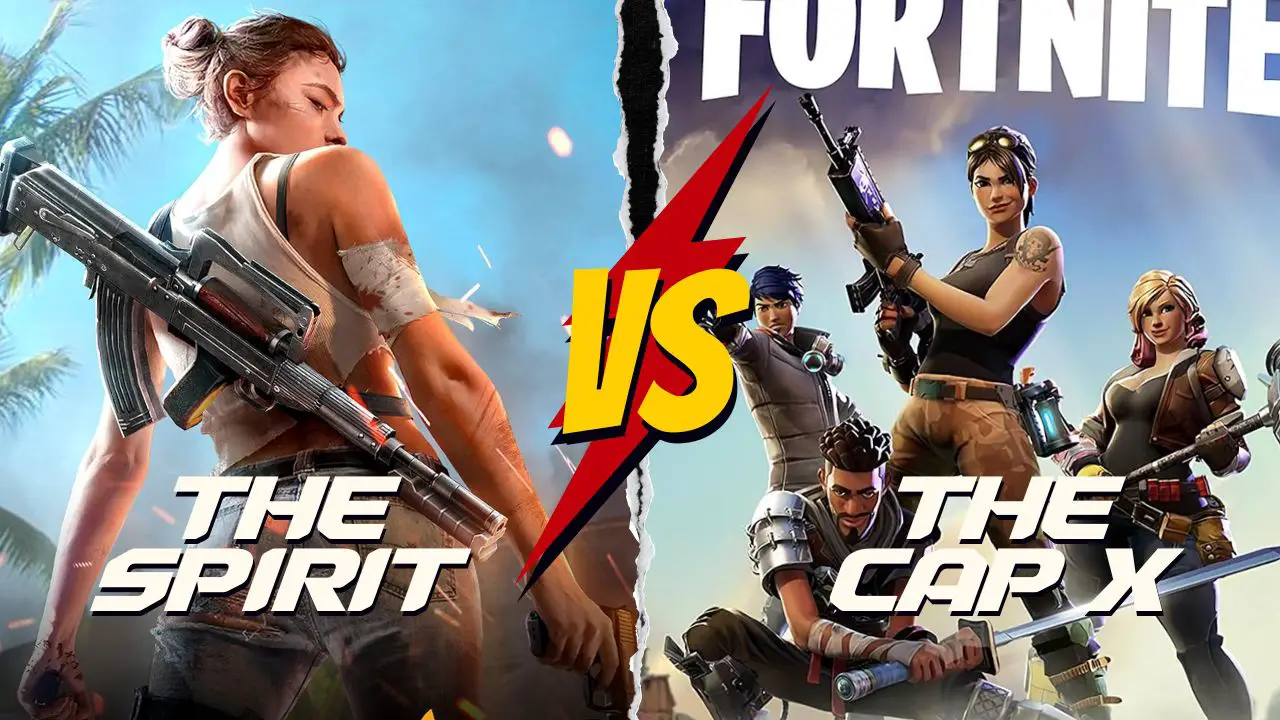
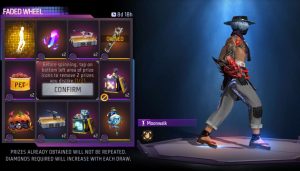
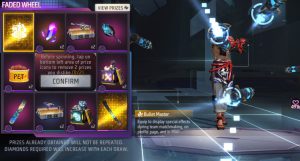
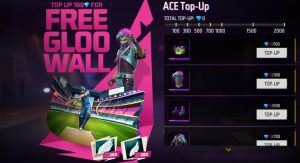
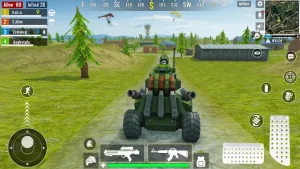
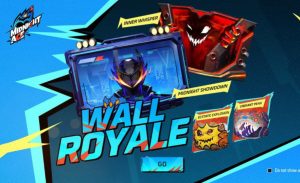



Very Interesting
Nice Information
Nice
Well
good
Good